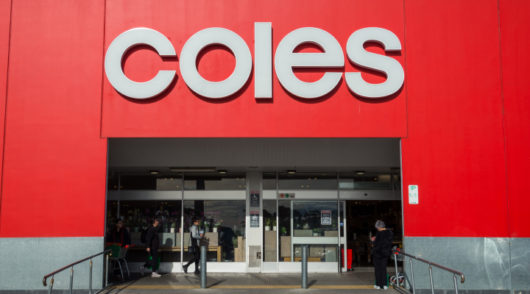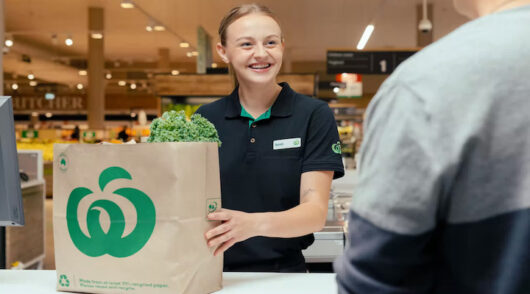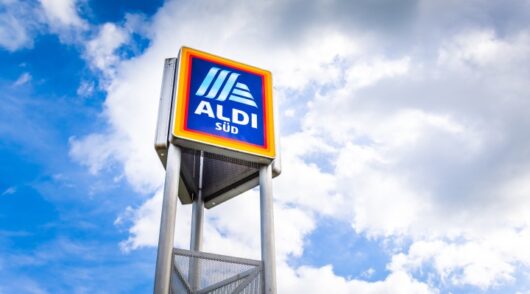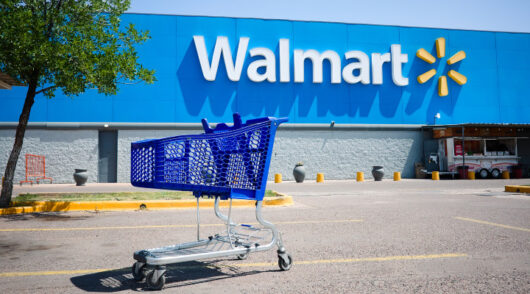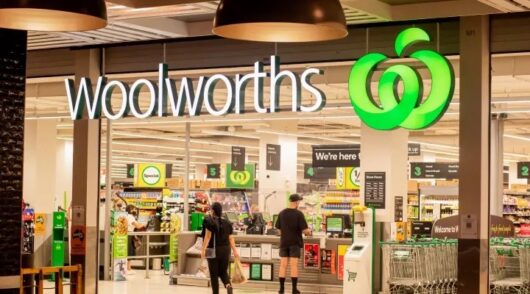Last week’s announcement of a partnership between Woolworths and Australia Post to install at least 500 parcel lockers on supermarket sites across the country was framed as a small but significant win in the duopoly’s battle for shoppers.
It’s taken for granted that Woolworths will see a sales boost from the 1.9 million MyPost customers who might decide to do a quick food shop when they come to collect their parcels, although the supermarket giant prefers to describe it as a customer experience initiative.
“Our partnership with Australia Post is about enhancing the customer experience at our stores,” Kate Langford, general manager of digital retail at Woolworths Food Group, told Inside Retail Weekly, comparing it to the company’s decision to act as a collection point for eBay orders in more than 90 Woolworths and BIG W stores earlier this year.
But viewing the partnership only in terms of how it impacts Woolworths’ position in the market misses the bigger picture: the waning of click and collect as the be-all and end-all fulfilment option. Retailers should take note.
As time-poor consumers demand ever more efficient delivery methods, they are increasingly choosing pick-up and drop-off (PUDO) locations, which include parcel lockers and third-party retailers like convenience stores, and home-delivery subscription services like Amazon Prime.
In its recently released 2016 channel report on click and collect in the UK, Verdict Retail predicted PUDO will grow by 117 per cent between 2016 and 2021. Australia Post is clearly gearing up for similar uptake Down Under, with the Woolworths partnership set to triple its current network of 250 parcel lockers. And it’s not the only player eyeing the maturing PUDO market.
Australian delivery start-up ParcelPoint claims its business has ramped up considerably in the past two years. The start-up launched five years ago, with the aim of turning pharmacies, convenience stores, newsagencies and shopping centres into hubs where people could collect and return their online orders after hours and on weekends.
Over 200 retailers now offer ParcelPoint as a delivery or return option or both, including The Iconic, ASOS, Amazon, eBay and, as of two weeks ago, Specialty Fashion Group’s (SFG) City Chic brand.
ParcelPoint’s co-founder and CEO Julian Leach told IRW the company is handling a “significantly larger proportion of deliveries and returns because customers are looking for more flexibility and they’re more aware of their options.”
The real question, however, is not why more consumers or pureplay retailers are using third-party collection points, but rather why bricks and mortar retailers, with their own click and collect initiatives underway, like SFG, are getting on board.
Click and collect offers bricks and mortar retailers a clear incentive, with research showing it increases basket size. According to a 2015 survey of holiday shoppers in the US by the International Council of Shopping Centers, 69 per cent of click and collect users said they had purchased additional items while picking up their original order in-store.
But when orders are sent to a third-party collection point, retailers not only forego their in-store advantage, depending on the location, they may be sending their customers into a competitor’s shop instead.
Verdict Retail suggests the costly reality of click and collect has made bricks and mortar retailers more willing to accept these trade-offs. Rapid consumer uptake and the associated costs of picking, handling and transporting goods means retailers are generating on average just over £13 ($22) per consumer in additional purchases, the research and analysis company found.
Meanwhile, parcel lockers and third-party collection points often have bigger networks than most retailers’ footprints and still benefit from the reduced shipping costs associated with delivering orders to a central location rather than individual addresses.
Speaking to IRW, Dominique Lamb, the CEO of the National Retail Association, described the rise of PUDO locations as a good thing for Australian retailers: “It allows retailers that don’t have the facilities or floor space to store products to take advantage of omnichannel and to offer cheaper postage.”
According to Lamb, retailers will soon have more third-party providers to choose from: “I think we definitely will see more people in this space, whether [they’re] individual retailers or external providers. It’s going to come down to who can offer the quickest service, the quickest access to your product.
“The busier people get and the more built up our cities get, with people commuting longer, it’s all about the convenience factor. I would say watch this space.”
IRW asked SFG for comment on its recent partnership with ParcelPoint, but it had not provided a response at the time of publication.
As parcel lockers and other collection hubs proliferate in Australia, a hybrid delivery model is emerging, where retailers’ own click and collect offerings sit side-by-side with external providers. This is already common in Europe, with retailers like John Lewis leading the way.
But even as retailers in Australia catch up on this trend, their counterparts in the US, UK and Europe are miles ahead on home-delivery subscription services like Amazon Prime, with ASOS, boohoo.com and most recently New Look launching their own delivery subscriptions. Verdict Retail predicts this service presents the biggest threat to click and collect going forward.
Access exclusive analysis, locked news and reports with Inside Retail Weekly. Subscribe today and get our premium print publication delivered to your door every week.


